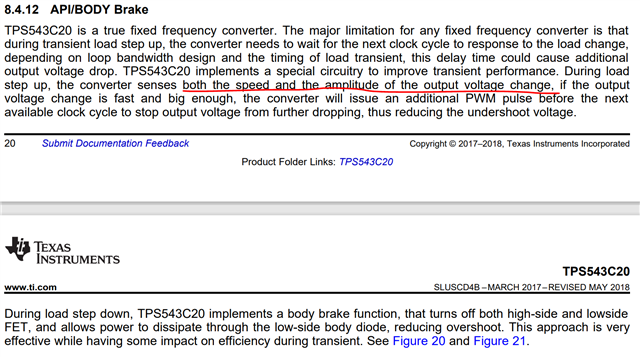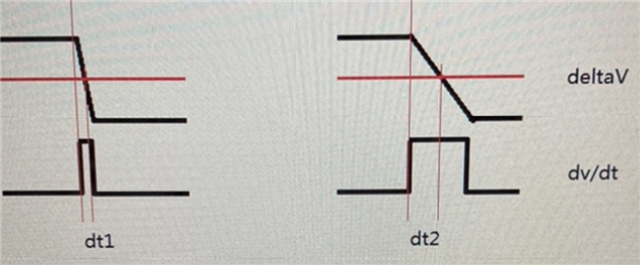Hi expert,
1. The API feature is used in load-step up, it claims that control circuit senses both speed and amplitude of undershoot.
Does it mean it will sense both dV/dt(slew rate) and delta V(compared with threshold) together, and these two elements should satisfy "AND“ relationship?
If so, the dV/dt threshold are fixed(we cannot modify the sensitivity of voltage change speed), right? Any spec of this slew rate?
2. Once API is triggered, it looks there'll be only one extra PWM pulse inserted(1 extra pulse during one switching cycle).
It is possible that >1 PWM pulses will be inserted(find API in several switching cycles)?
3. The BB feature is for load-step down, does the overshoot threshold setting totally the same as API?



